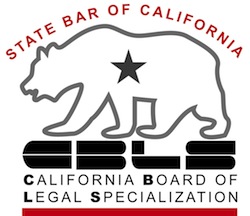A small opening in the legal barrier to discharging student loans in bankruptcy has appeared in a case called Roth.
To discharge a student loan in bankruptcy, the borrower must show that repayment of the loan would cause he and his dependents undue hardship.
The test for what constitutes “undue hardship” is many circuits the Brunner test:
- repaying the student loan would keep the borrower from a minimal standard of living
- the conditions that prevent repayment are likely to continue for the foreseeable future
- the borrow has made a good faith effort to repay the loan
In short, the bar is very high and as a result, student loans, no matter how burdensome or unwise, usually survive a bankruptcy discharge.
Many bankruptcy judges, confronted with very sad and hopeless situations involving student loans, have regretfully declared themselves bound by the 25 year old test crafted in Brunner.
Roth opens the door
Along comes the Roth decision of the 9th Circuit Bankruptcy Appellate Panel. The good news is that the appeals panel overturned the decision of the trial court and permitted the discharge of Ms. Roth’s student loans.
The better news is found in Chief Judge Jim Pappas’ concurrence, which roundly calls for the 9th Circuit to revisit and revise the Brunner test.
the analysis required by Pena/Brunner to determine the existence of an undue hardship is
too narrow, no longer reflects reality, and should be revised by the Ninth Circuit when it has the opportunity to do so. Put simply, in this era, bankruptcy courts should be free to consider the totality of a debtor’s circumstances in deciding whether a discharge of student loan debt for undue hardship is warranted.
Pappas contrasts the changes in the law governing the dischargeability of student loans since Brunner was written.
When Brunner was decided, a student loan could be discharged with no more showing than that it had been in pay status for five years. Alternatively, the borrower could show that repayment would cause undue hardship.
Quite a different world from today, when student loans of whatever age are dischargeable only on a showing of undue hardship, using a test crafted for another time and another legal circumstance.
We can hope that Pappas’s analysis of the [dis]utility of the old test in a new world will prod other judges, and more importantly, other circuits, to revisit and revise Brunner.
The stakes are huge.
Image credit: © Ilona Baha – Fotolia.com






